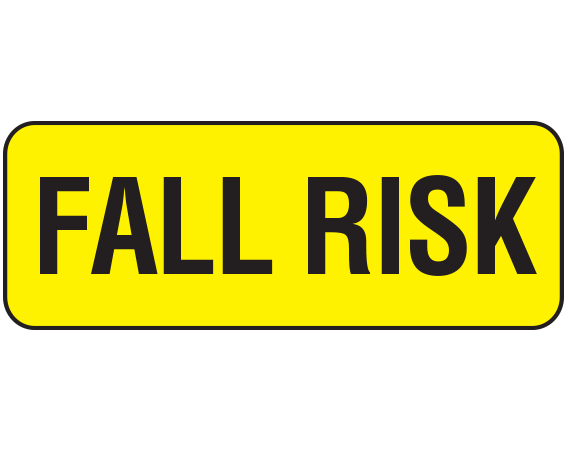Patient Alert Labels for Hospitals: An Overview of Label Information
Patient Alert Labels For Hospitals: An Overview Of Label Information
Hospitals that treat hundreds or thousands of patients at any given time can’t rely on memory to properly organize and refer to crucial patient information. This is where patient alert labels for hospitals enter the picture. By putting the correct patient alert labels in place, hospitals do more than help improve positive health outcomes in inpatients. They also help themselves avoid malpractice lawsuits from patients who experience health problems due to improper treatment.
Information for Patient Alert Labels
Patient alert labels can literally contain thousands of pieces of information -- not all on one label, of course -- that apply to the particular health and treatment needs of specific patients. Below, we offer a general overview of types of patient alert labels that can have a truly significant impact on health outcomes. To learn about additional information options for patient alert labels, please contact the medical label specialists at Shamrock Labels and inquire today.
1. Name Alert / Two Patients With Same Name
Over the years, many patient deaths and subsequent wrongful death lawsuits have resulted from inadvertently transposing the treatment status and/or treatment regimen of one patient with the treatment status and/or treatment regimen of another patient who has the same name. Applying labels that contain the information “Name Alert / Two Patients With Same Name” is all it can take to prevent serious medical mishaps that could injure or kill patients in the hospital.
2. Allergy Information
We often think of allergies in terms of particulates from the natural environment, prescription medications, and over the counter (OTC) meds. In hospital settings, however, a wider range of potential allergy agents must be considered, such as latex, medicines dispensed only in hospital settings, and solvents that are used for general cleaning purposes. Allergy information labels help nurses and physicians manage patients’ allergies to encourage good health outcomes.
3. Check Patient’s History
Some patients have a medical history that indicates that they shouldn’t be administered certain medications or subjected to particular therapies due to the potential for poor health outcomes. For example, a patient who is treated for anxiety and has a history of abusing benzodiazepines may fare better in the long run if he or she is treated with less addictive anti-anxiety meds, such as Atarax or a particular class of antidepressants. “Check Patient’s History” labels save lives.
4. Fall Risk
In hospital settings, we commonly associate “fall risk” with elderly patients who are unsteady when standing and accident victims who have limited mobility due to serious injuries. However, fall risk results perhaps most commonly from the type of medications hospital patients take while in house. For example, anti-anxiety agents, various types of pain relievers, and certain heart medications can create unsteadiness in even the youngest, seemingly healthiest patients.
Need Patient Alert Labels?
If so, you are at the right place. With our ability to produce custom patient alert labels, in addition to supplying stock patient alert labels, we can provide you with a practically endless variety of labeling solutions for patient alert needs, including labels that have special adhesive options, unique temperature storage options, low-particulate material, and much more.
Need Stock or Custom Patient Alert Labels?
We’ve got what you need. Call us today at (800) 323-0249, or send us a message!



